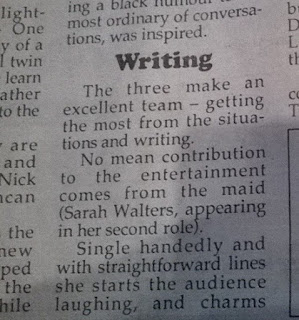A little while
back, I did some film location research, and it led me down rather a strange
alley. While looking up a West London
location shown in ‘Alfie’, I decided to see if this was close to the infamous
Rillington Place. I thought that this
might give some context to the West London area pre-gentrification. As it turned out, the two streets were not as
geographically close as I had thought they might be. However, the act of looking up Rillington
Place led me down this other path.
The events that
occurred in Rillington Place in the 1950s were famously made into a film – ’10
Rillington Place’ (1971) starring Richard Attenborough. I have seen this film once, many years ago,
and it disturbed me so much that I never want to watch it again. Attenborough was such a skilled actor that
his portrayal of serial killer Reginald Christie was superbly horrible. The murder of the innocents – especially the
hanging of an innocent man – gave me a restless sleep that night. I can picture
the film clearly, despite having seen it possibly two decades ago now. Typing the phrase “10 Rillington Place” into
Google first brought up the interesting fact that the street itself was used as
a location in the film. This was just
before its demolition – but after its renaming as Ruston Close. In order to find out how close it was to the
‘Alfie’ location, I had to seek out the most recent name. This is when I found out that there are many
people out there that have made big efforts to find the now hidden location of
the murders. Arguments take place in online forums as to where exactly the
house stood. Some are determined that
there is a bit of old wall remaining and that they have stood in the back yard
of the house. Others argue (plausibly)
that the street alignment was changed on rebuilding, making a drain cover the
location. The dedication that people have given to their search is quite
astonishing and quite frankly bizarre.
 |
| Attenborough as Christie by @aitchteee |
A film such as
’10 Rillington Place’, which aims to depict a real-life event, should not be taken
as a historical document. Films are required to have some drama. Scripting or character description may rely
on hearsay or potentially exaggerated newspaper reports. But taken alongside my internet findings its
very existence throws an interesting light on some attitudes to the phenomenon
of a serial killer. It shows that there
is a distinct section of people who want to know every detail of a horrific
event, who find pleasure in seeking out relics and in seeing the location. They do not condone the murders, but they
attach a significance to them. The modern
age has tended to give celebrity to some who really do not deserve it. There is perhaps some merit in the film in the
demonstration of the tragedy of a miscarriage of justice that ends in capital
punishment. But there is certainly no
enjoyment to be had. It simply tells the story that many people obviously want
to see. This is a genre of film that
tells people of the future about 20th century society and its
foibles simply by existing.
 |
| Visit my Amazon page for your holiday reads! |



















